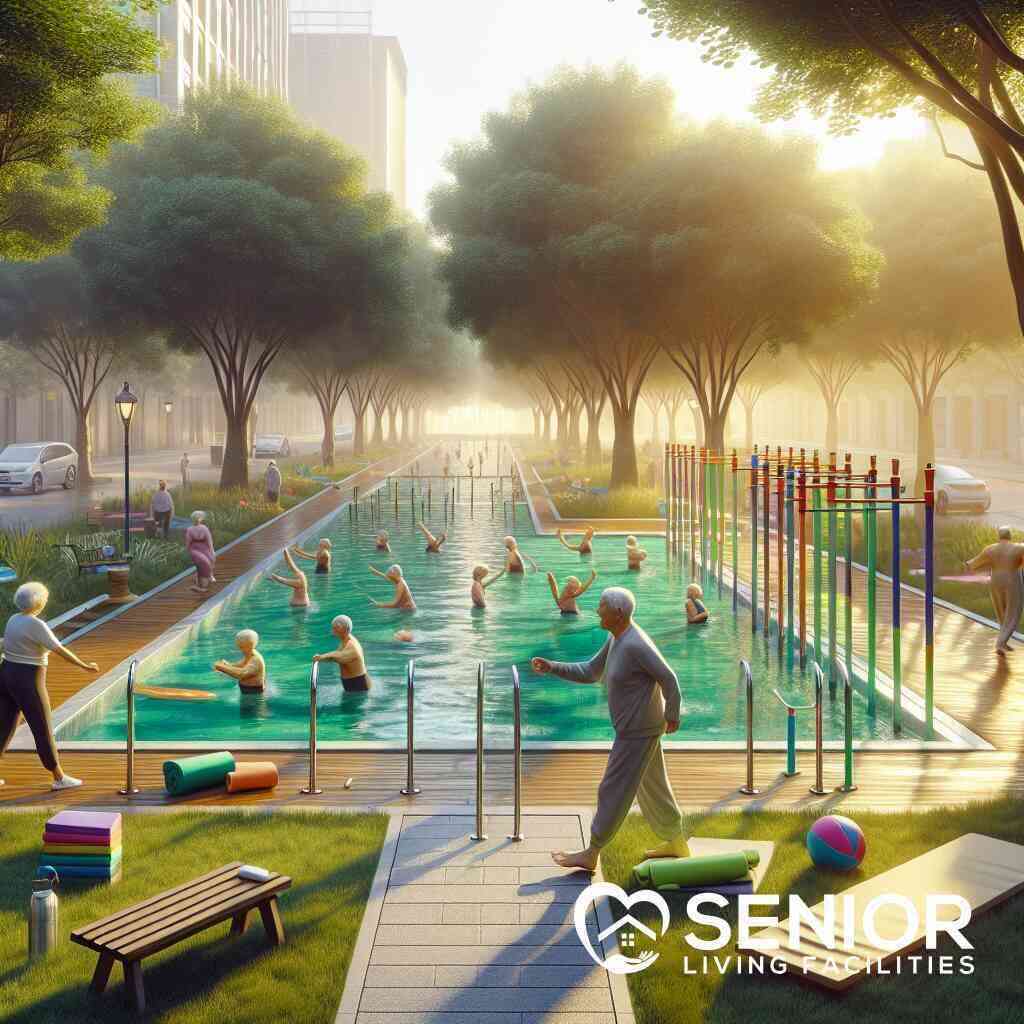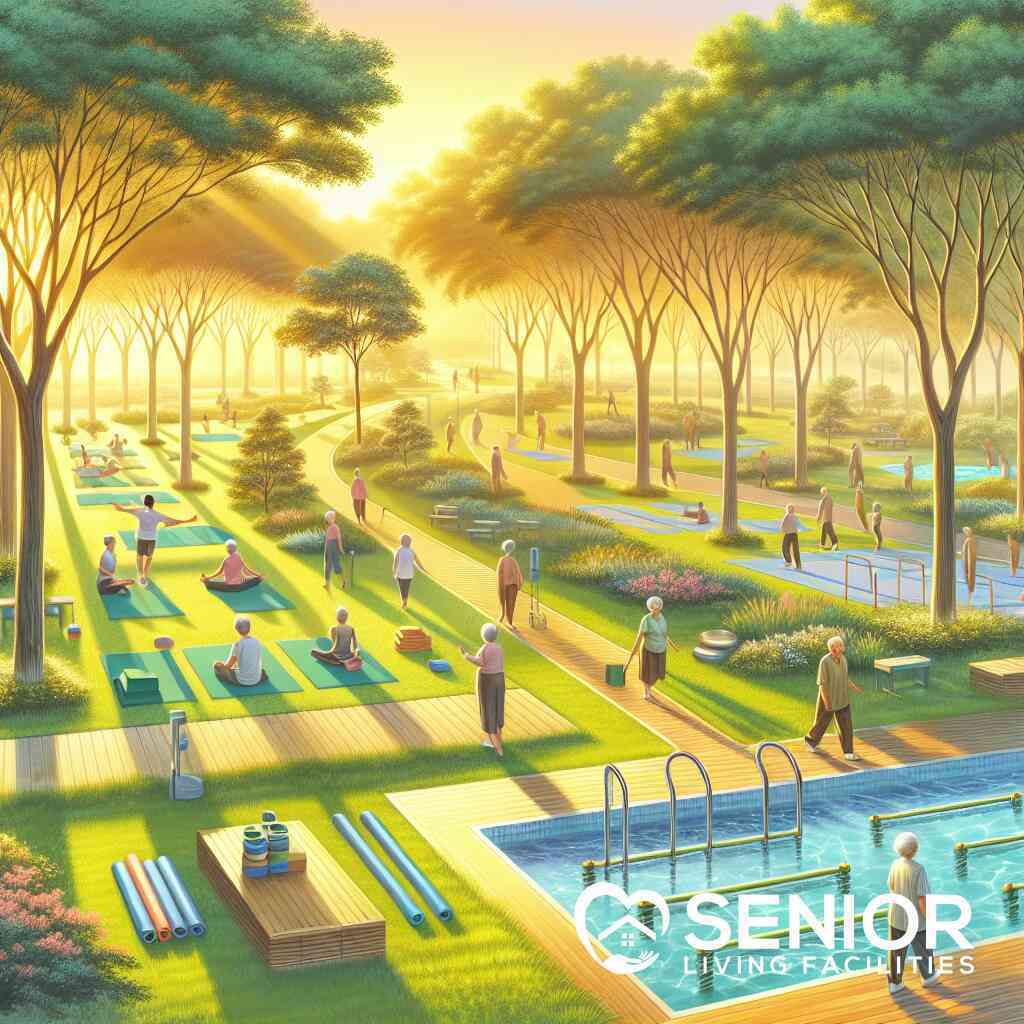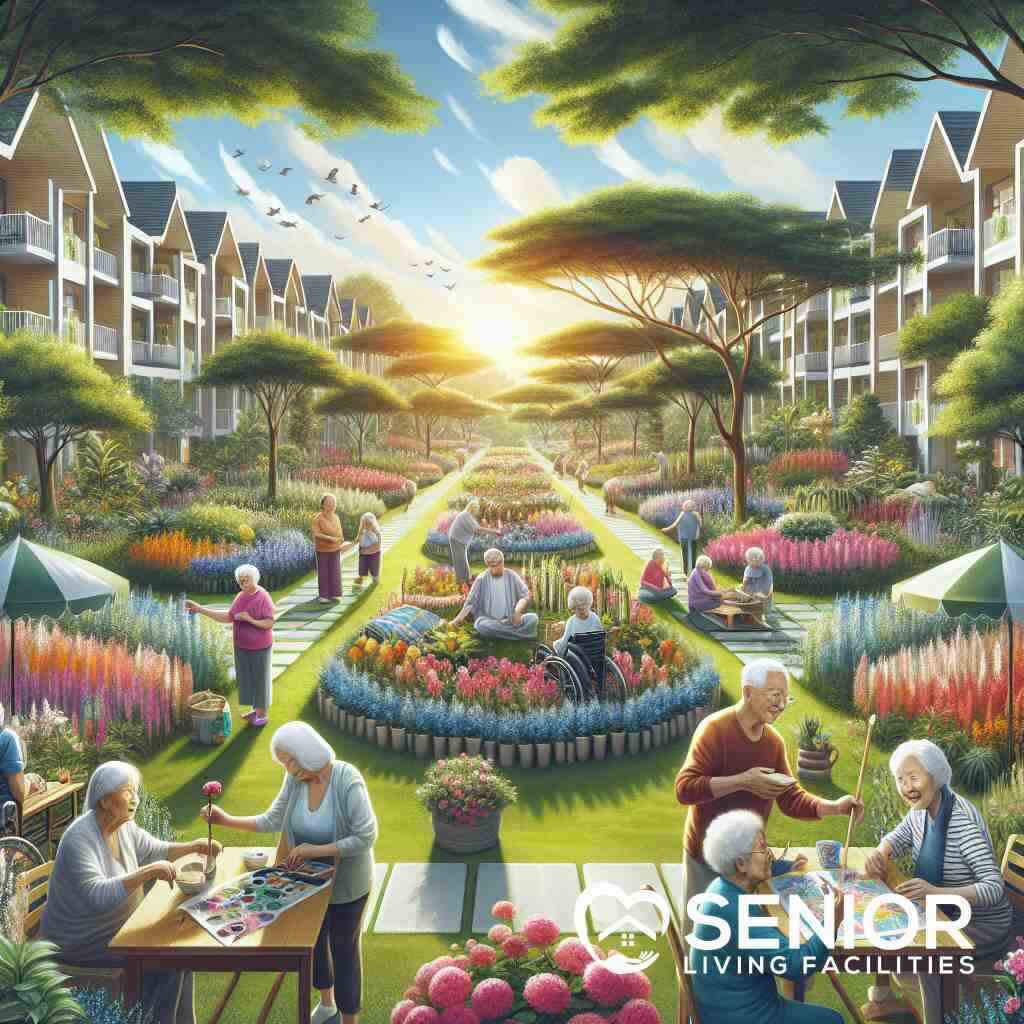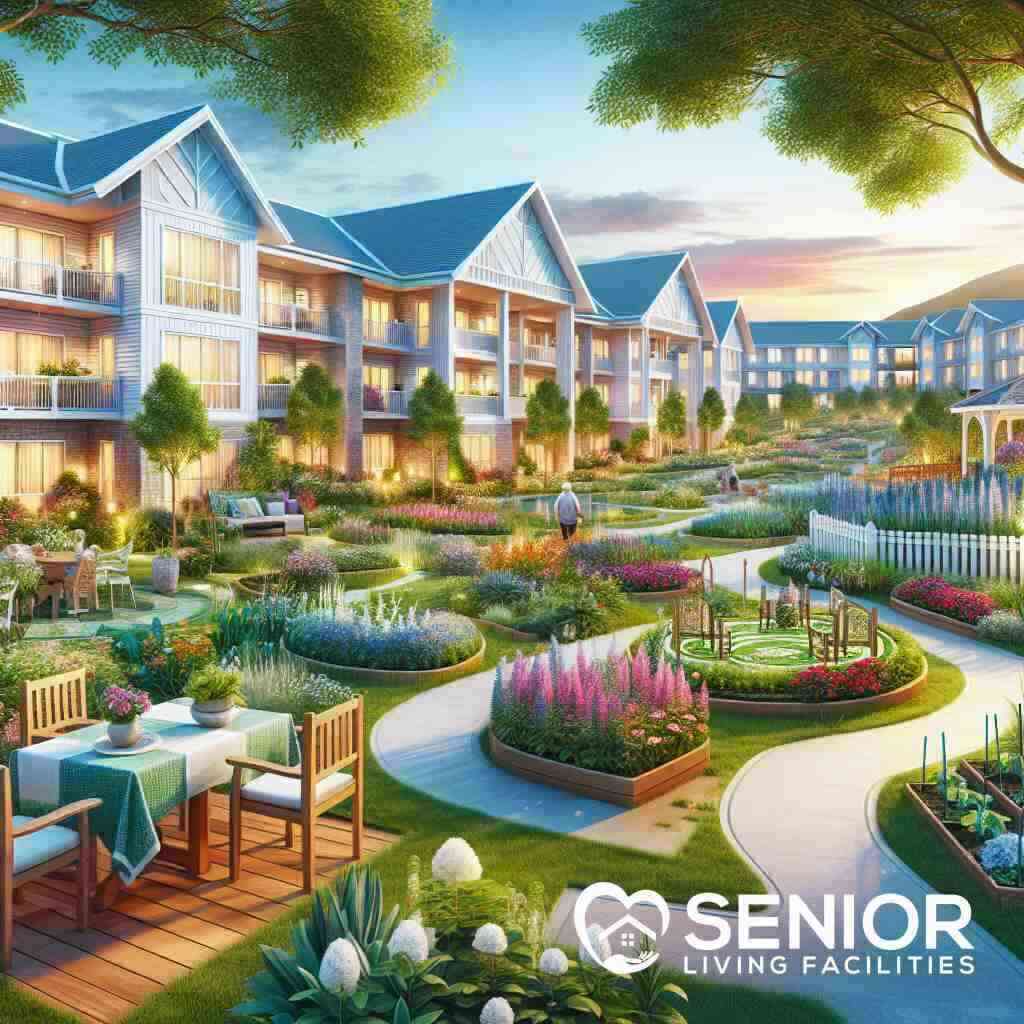
Why Should Senior Citizens Perform Balance Exercises?
June 3, 2024
Introduction to Balance in Senior Living
Understanding the importance of balance exercises for seniors
Balance exercises play a critical role in the overall health and wellness of seniors. As individuals age, they may experience a decline in balance and coordination. This can lead to an increased risk of falls and injuries, affecting their ability to perform daily activities independently. Engaging in balance exercises for the elderly can significantly improve stability, enhance mobility, and reduce the risk of falls. These exercises are designed to strengthen the muscles that keep you upright, including your legs and core, and to train the body’s systems that control balance. Not only do these activities improve physical health, but they also boost confidence, allowing seniors to enjoy a more active and independent lifestyle.
How balance affects daily life in seniors living community
Balance is fundamental to the daily lives of seniors residing in living communities. Good balance ability is essential for walking, getting up from a chair, climbing stairs, and even bending down to tie a shoe. Challenges in balance can severely limit these daily living activities, affecting a person’s independence and quality of life. Within a seniors living community, where engaging with others and participating in communal activities is encouraged, compromised balance can lead to social isolation as well. Recognizing the importance of balance, many senior living communities integrate balance exercises into their regular wellness programs. These exercises help maintain and improve residents’ ability to perform day-to-day tasks safely and independently.
The role of Senior Living Facilities in promoting senior health and wellness
Senior Living Facilities play a crucial role in promoting health and wellness among older adults. They offer a broad range of senior living fitness options, from group exercise classes to individualized physical therapy sessions tailored to improve balance and prevent falls. Through their wellness programs, senior health and wellness programs, these communities provide the necessary resources and support for seniors to maintain optimal physical health. Senior living facilities emphasize the importance of regular physical activity, including balance exercises, as a cornerstone of senior health. By fostering an environment where seniors are encouraged to enhance their balance and mobility, these facilities support not only the physical wellbeing of their residents but also their independence and quality of life.
The Science Behind Balance and Aging
Changes in balance as we age
As individuals age, the body undergoes various changes that can significantly affect one’s balance and stability. Loss of muscle strength, flexibility, and slower reflexes contribute to the deterioration of an individual’s ability to maintain and correct their balance. Additionally, the sensory systems that help us perceive our position in space, such as vision, proprioception (the sense of body position), and the vestibular system (responsible for balance), may begin to decline. These changes can make seniors feel unstable and increase their risk of falls. Understanding these transformations is crucial for identifying the best approaches to counterbalance the effects of aging, emphasizing the importance of tailored balance exercises for seniors.
The impact of improved balance on fall risk reduction for elderly
Improving balance through specific exercises has a profound impact on reducing the risk of falls among the elderly. Falls are a leading cause of injury and morbidity in older adults, often leading to a decline in independence and quality of life. Regular balance training, by strengthening the muscles and enhancing the sensory systems responsible for balance, can significantly lower the incidence of falls. Programs focused on fall prevention workouts for seniors specifically address these risks. By working to improve the neuromuscular coordination, flexibility, and strength needed for balance, such exercises ensure that seniors can navigate their environments safely and confidently.
Integrating balance activities for older adults in senior wellness programs
Senior living facilities recognize the importance of balanced activities as a core component of wellness for older adults. By integrating daily balance routines for older adults into their wellness programs, these facilities provide structured opportunities for residents to enhance their balance and stability. Activities might range from simple standing balance exercises to more complex movements that challenge the balance system, like tai chi or aquatic workouts. The inclusion of balanced activities in senior wellness programs not only addresses the physical needs of the elderly but also promotes a sense of community and belonging as individuals participate in group classes, further encouraging adherence to a more active lifestyle. It’s a holistic approach that improves physical health while fostering social connections, making it a win-win for residents of senior living communities.
Comprehensive Balance Exercises for Seniors
Safe Balance Exercises for Seniors
Engaging in safe balance exercises is a cornerstone for maintaining mobility and independence among seniors. These exercises are designed to improve stability without placing the elderly at risk of injury. For instance, standing on one foot or walking heel to toe provides both a physical and cognitive challenge, enhancing balance over time. Additionally, seated leg lifts can strengthen core and leg muscles, further supporting stability. Implementing these exercises requires minimal equipment and can be easily adapted to fit individual fitness levels, ensuring all seniors have the opportunity to participate. For those in senior living communities, these activities can be a part of daily wellness programs, promoting a culture of health and safety.
Daily Balance Routines for Seniors
Incorporating daily balance routines into a senior’s lifestyle can significantly contribute to fall prevention and enhance quality of life. These routines might include a mix of stretches, light strength training, and balance-focused movements, such as tai chi or simple yoga poses. Integrating balance exercises into everyday activities, like brushing teeth or cooking, can also help seniors practice stability in real-world scenarios. Such consistent practice not only improves balance but also builds confidence in moving safely through various environments. Offering access to these routines through structured programs within seniors living community wellness activities encourages regular participation among residents.
Leg Strength and Balance for Seniors
Leg strength is fundamentally linked to balance and stability, making it a critical focus area for senior balance exercises. Squats, even when modified to be performed using a chair for support, can significantly improve lower body strength. Additionally, stepping exercises that mimic climbing stairs can increase leg power and endurance, further supporting balance. It is essential for these exercises to be introduced gradually, with an emphasis on safety and individual capability. Tailoring these activities to each senior’s fitness level ensures they are challenging yet achievable, fostering a sense of achievement and motivating continued engagement in physical activities.
Low-impact Exercises for Seniors
Low-impact exercises offer a gentle yet effective way for seniors to improve balance and overall fitness without straining joints and muscles. Activities such as swimming, walking, and cycling on a stationary bike are excellent options, providing cardiovascular benefits while strengthening the body’s core and lower extremities, which are crucial for good balance. Additionally, low-impact aerobics or water aerobics in a group setting can promote social interaction and mental well-being alongside physical health benefits. When implemented as part of the fitness options available in assisted living plans, these low-impact exercises ensure that seniors have diverse opportunities to engage in balanced-related activities tailored to their health and wellness needs.
Implementing a Balance Improvement Plan

Starting a senior balance training program
Initiating a senior balance training program can be a transformative approach for elderly individuals aiming to enhance their mobility and reduce the risk of falls. Such programs should start with a comprehensive assessment by a healthcare professional to tailor the exercises to each senior’s unique capabilities and risk factors. Fundamental elements might include static and dynamic balance activities, strength training focusing on lower limbs, and flexibility routines. Additionally, it is essential to incorporate exercises that simulate real-life scenarios seniors encounter daily. Utilizing resources like the senior living blog for elderly fitness can provide valuable insights and ideas for creating an effective balance training curriculum within senior living facilities. For seniors living at home, online tutorials or local community classes may serve as excellent starting points. The key is to create a routine that is both challenging and achievable, ensuring consistent participation and engagement.
Incorporating mobility exercises for the elderly in daily activities
Integrating mobility exercises into the daily routines of the elderly is a strategic method to enhance balance and prevent falls. By embedding simple yet effective exercises into activities like walking to the mailbox, standing up from a chair, or even during commercial breaks on TV, seniors can significantly improve their balance and coordination. These exercises could include toe raises while washing dishes or heel-to-toe walks along a hallway. The goal is to make the exercises a natural part of their day, eliminating the need for dedicated “exercise time” that some may find daunting. This approach not only helps in building strength and balance but also in establishing a more active lifestyle. For senior living facilities, ensuring communal areas and personal living spaces are conducive to such activities is paramount. Providing clear pathways for walking, sufficient space for standing exercises, and even simple modifications in furniture can encourage seniors to integrate mobility exercises seamlessly into their daily lives.
Physical therapy for seniors: A pathway to improving balance
Physical therapy plays a critical role in improving balance among the elderly, offering a personalized approach to addressing the unique challenges faced by seniors. Professional physical therapists can design specialized programs that target balance deficiencies, muscle weaknesses, and other mobility issues. Through a combination of therapeutic exercises, balance training, and sometimes manual therapy, physical therapy helps seniors regain confidence in their movements and reduce the risk of falls. For those in senior living facilities, physical therapy in senior care can be a key component of a comprehensive wellness program, offering one-on-one sessions tailored to each resident’s needs. Moreover, physical therapists can provide valuable education on fall prevention techniques and the safe use of assistive devices, further empowering seniors to navigate their environment safely. Whether offered on-site at a senior living community or through outpatient services, physical therapy stands as a cornerstone for enhancing balance and promoting independence among the elderly.
Evaluating and Choosing the Right Senior Living Health Programs
Assessing assisted living plans with a focus on senior living fitness options
When the time comes to evaluate assisted living plans, a primary factor for many families and seniors is the range of senior living fitness options available within the community. The right blend of physical activity programs can significantly influence the overall well-being and happiness of residents. Fitness options should cater not only to current interests and fitness levels but also offer opportunities to explore new activities. Equally important is assessing the community’s commitment to balance and coordination for seniors, acknowledging the pivotal role these elements play in reducing fall risks and enhancing the quality of life. Facilities that prioritize comprehensive wellness programs, including senior care exercise plans, understand the importance of keeping their residents physically, mentally, and socially active.
Finding communities for seniors 55+ with strong elderly fitness programs
As we delve into the quest for the ideal senior community, one must emphasize the search for establishments that offer robust elderly fitness programs. These programs play a substantial role in ensuring that seniors not only maintain but also improve their physical strength and balance. Communities designed for seniors 55+ should provide access to a diverse range of exercise options, from low-impact routines to more tailored balance and strength training sessions designed to meet the unique needs of older adults. The availability of such programs can serve as a barometer for the community’s dedication to fostering an active and engaged lifestyle among its residents. Prospective residents and their families are encouraged to visit Senior Living Facilities to find communities nearby that feature exemplary fitness and wellness programs tailored to the senior demographic.
Senior Living Facilities’ role in providing access to senior care exercise plans
Senior Living Facilities plays an indispensable role in bridging the gap between seniors and access to quality senior care exercise plans. With a comprehensive network spanning all 50 states, our platform ensures that families and seniors are well-informed about the senior living options available to them, including detailed insights into the fitness and wellness programs offered by each community. By emphasizing the importance of an active lifestyle and the various benefits of engaging in balance exercises for seniors, Senior Living Facilities advocates for a holistic approach to senior living that encompasses physical well-being as a fundamental aspect of care. Our dedicated team works tirelessly to ensure that every senior has the opportunity to find a living environment that not only meets their care needs but also supports and enhances their desire to lead a physically active and balanced life.
Conclusion: The Path Forward for Senior Living Balance
Committing to ongoing balance and coordination for seniors
The journey toward enhancing balance and coordination for seniors is an ongoing process, pivotal for sustaining health, mobility, and independence. With age, the natural decline in physical capabilities necessitates a proactive approach to incorporate balance exercises for seniors. Committing to a routine that includes tailored balance and stability exercises can significantly diminish the risk of falls, a common concern among the elderly population. Such dedication not only aids in physical health maintenance but also bolsters confidence among seniors, empowering them to navigate their daily lives with more assurance and less fear of falling. Senior living facilities are integral in supporting this commitment by providing structured programs, professional guidance, and a safe environment for practice.
How senior living facilities support elderly balance improvement
Senior living facilities are instrumental in facilitating balance improvement for the elderly. By offering access to health care for seniors information, customized exercise plans, and professional support, these communities provide the resources necessary for residents to enhance their balance and coordination. Engaging in physical activity becomes an integral part of daily life, with opportunities for both individual and group exercises tailored to the varying needs of seniors. From yoga and Tai Chi to more traditional strength and balance training, the goal is to make physical wellness both accessible and enjoyable. Furthermore, senior living facilities often employ physical therapists who work one-on-one with residents to develop personalized balance improvement plans. This holistic approach ensures that every senior has the opportunity to safely maximize their physical potential, leading to improved health outcomes and a heightened sense of independence.
Encouraging a lifestyle of stability exercises for seniors
Fostering a culture that values and encourages a lifestyle inclusive of stability exercises requires a community effort, especially within senior living environments. Emphasizing the benefits of such exercises, including enhanced mobility, reduced fall risk, and increased personal autonomy, motivates seniors to integrate these practices into their daily routines. Encouragement from peers, family members, and caregivers plays a crucial role in motivating seniors to stay active. Moreover, senior living communities can innovate by integrating balance and coordination exercises into enjoyable daily activities, making fitness a natural part of seniors’ lives. Celebrating milestones and improvements, no matter how small, can also boost motivation and commitment to a lifestyle that prioritizes balance and stability. Through sustained effort and support, stability exercises can become a cornerstone of a senior’s daily agenda, paving the way for a healthier, more vibrant senior living experience.
By focusing on balance and coordination, senior living facilities play a pivotal role in ensuring their residents lead fulfilling, independent lives. Encouraging a lifestyle that includes regular stability exercises is not just about preventing falls, it’s about empowering seniors to live confidently and with dignity. As we look to the future, the continued emphasis on balance and mobility exercises within senior living communities holds the promise of a healthier, more active generation of older adults.
Frequently Asked Questions
Question: What kind of balance exercises for seniors do Senior Living Facilities recommend for improving balance in the elderly?
Answer: Senior Living Facilities advocates for a variety of balance exercises designed to meet the unique needs of seniors. These include tai chi, standing on one leg, heel-to-toe walks, and chair squats that are crucial for enhancing leg strength and balance. We recognize that maintaining and improving balance is vital for fall prevention and overall mobility. Our recommended exercises, when integrated into daily routines, can help seniors lead more confident and independent lives. Each senior community we partner with offers specialized programs aimed at elderly balance improvement, ensuring seniors receive the best care and opportunities to stay active.
Question: How does participating in elderly fitness programs at Senior Living Facilities contribute to fall risk reduction for the elderly?
Answer: Participating in elderly fitness programs at Senior Living Facilities significantly contributes to fall risk reduction by strengthening the muscles, improving flexibility, and enhancing balance and coordination. Our fitness options are tailored to the capabilities and needs of seniors, incorporating safe balance exercises and stability training. These programs are not only about physical health,they also provide a social component, allowing seniors to engage in physical activities with their peers. This holistic approach ensures seniors have the best chance to reduce fall risks while enjoying an active, communal lifestyle.
Question: In the blog post “Why Should Senior Citizens Perform Balance Exercises?”, the role of senior living health programs in promoting balance was highlighted. Can Senior Living Facilities personalize these programs for residents with varying abilities?
Answer: Absolutely! Senior Living Facilities prides itself on working closely with senior living communities that offer highly personalized health and wellness programs, including senior balance training and mobility exercises for the elderly. Understanding that each senior has unique health requirements and physical capabilities, these programs are designed to cater to individual needs. Physical therapists and fitness professionals are available to assess and create tailored exercise plans focusing on balance, coordination, and strength, ensuring all residents, regardless of their current level of mobility, can participate safely and effectively.
Question: How do Senior Living Facilities ensure that their balance activities for older adults are both safe and effective?
Answer: Senior Living Facilities ensures the safety and effectiveness of balanced activities for older adults by partnering with communities that employ certified fitness instructors and physical therapists specializing in senior health. These professionals are trained to design and supervise exercise programs that meet the safety requirements of seniors, incorporating proven balance and strength training exercises. Moreover, we emphasize the importance of facilities equipped with safe environments for carrying out these activities, such as non-slip floors and handrails, to minimize any risk of injury. Regular assessments by health professionals also allow for continuous monitoring and adjustment of exercise plans to fit the evolving needs of seniors, ensuring the highest standards of safety and efficacy are met.
Question: What can families expect when searching for senior living fitness options through Senior Living Facilities?
Answer: When searching for senior living fitness options through Senior Living Facilities, families can expect a seamless and informative experience. Our platform enables users to compare a wide range of communities for seniors 55+ that offer robust elderly fitness programs, including those focusing on balance and coordination. Details regarding the level of care, types of activities offered, and accessibility of professional guidance for balance exercises for seniors are readily available. Our dedicated team is committed to providing personalized support to help find the perfect match that aligns with their loved one’s health needs and lifestyle preferences, ensuring a fulfilling and active retirement life.



